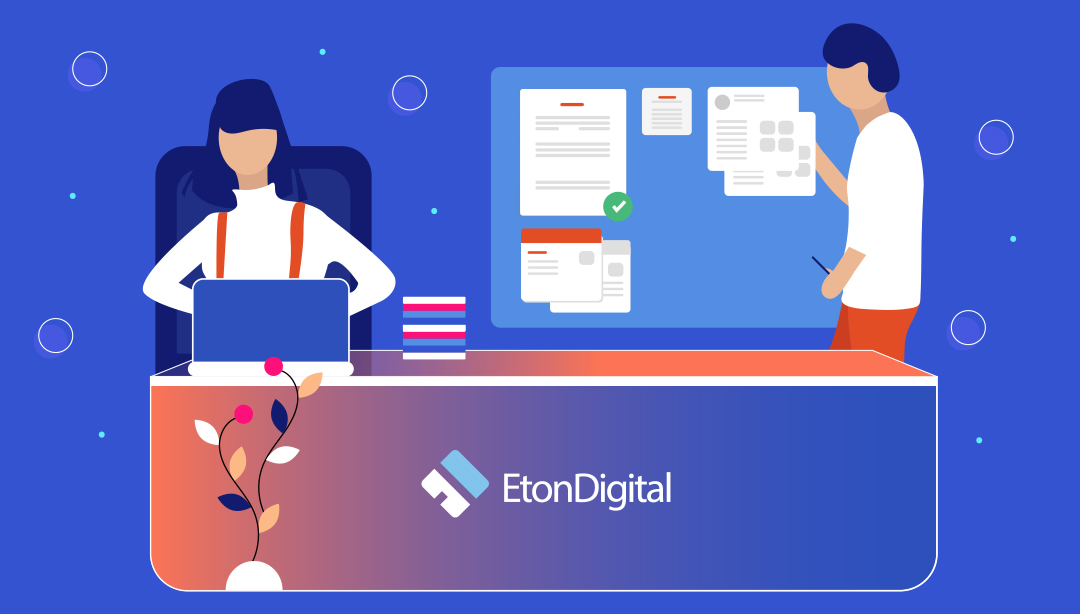You have a great idea for a project and you managed to find an experienced team to help you complete it. Everything sounds perfect, but is it really that simple? Or should you pay attention to something else as well?
Let’s face it, finding the best development company in the market has never been harder. Yes, there are so many companies out there that claim to be the best, but not many of them have the necessary experience or knowledge to complete a project of every scope and complexity.
Especially if your project is a demanding one that requires a multidisciplinary team of experts.
So, how can you, as a client, make the right choice and select a company that will complete your project successfully and meet your business goals in agreed timescale?
Estimation is the key
Estimation is one of the key parts of any project. It involves a quantitative estimate of project cost, resources or duration.
Estimation is especially important during project planning. If there is no clear schedule when something will be completed – how will you know when to expect a finished project?
Why is estimation so important?
The answer is fairly simple – the team you hired doesn’t want to spend 800 hours working on a project when you will pay for only 500 hours and the other way round – you don’t want to pay for 800 hours when they agreed to finish the project in 500 hours.
Even though this is an important issue, the main problem with bad estimation is not only about the financial part. It also includes having a clear idea when a project is supposed to be finished. There are deadlines to be met and contracts to be executed. And this is equally important for both the company you hired and yourself.
How do we solve the estimation problem?
At Eton Digital, we pay close attention to both time and cost estimations. The role of our project managers is to help our teams estimate accurately by implementing different project management estimation techniques. They do it by carefully discussing and going over each and every part of the delivery process. In order to do this as efficiently as possible, there are several steps we make sure to complete.
The first step is to evaluate the entire project – what we need to do as a team. The second step is to determine how complex the project is. Who should be included, which technologies shall we use. Project requirements help us a great deal with this step, so we make sure to keep a close eye on it.
Once this step is done, it is time to move on to dividing the project into smaller chunks. Only in this way are we able to estimate each of these parts separately. When everything is estimated, together with the project manager, our design and development team goes through each and every part so if there are any missing pieces of information – we can identify any potential issues and discuss all possible solutions.
Project risk management as a necessity
Estimation is not the only important part of project planning that if executed poorly, will have serious consequences. Risk management is the one to think about as well. It is the process of identifying, assessing and controlling any possible threats (risks) to a project, as well as finding ways to mitigate these risks.
What are the most frequent project risks?
The most frequent risks for development projects are usually schedule risks, technical risks and external risks.
Schedule risks are definitely a pain point for many companies and they happen when a company falls behind in completing different tasks. Reasons for this may be numerous, but it all comes down to poor estimations and scope creep.
Technical risks can be related to scheduled risks because sometimes, a team may need more time than anticipated to complete some tasks. This can be because they don’t have enough experience or knowledge to carry out such tasks.
Last, but not least, is external risk management. The world keeps on changing, so if a project is a lengthy one, it may happen that the tech a company you chose used in the beginning changed dramatically during the development process. Another external factor is when you, as a client, decide to implement certain changes or to add some functionalities that were not defined during the planning process. These changes may require a lot of additional time to be implemented and these additional resources should be confirmed and approved by the client.
Before we go into detail about Eton Digital and how our teams solve these risks, it is important to mention that you should always ask the company you hired how they plan on solving any potential interruptions. If they don’t have a plan or if they don’t even know what project risk management is – it is a clear sign that you should look for another company to complete your project.
How do we solve project risk management problems?
The first on the list are schedule risks. To reduce this type of risk, it is necessary to have the appropriate amount of contingency time reserved for any possible issues. For example, this can be done by simply adding extra time overall or assessing each task carefully and allocating extra time for them.
What our team does is after carefully reviewing each task and estimating it, we discuss any potential issues that may require extra time. In this way we are able to be better prepared for any delays.
The second type of risks (the technical risks) are easily solved as well. Our project managers have an open relationship with all team members and thus they know who has enough knowledge and experience to complete tasks in a timely manner. In this way, all possible unpleasant surprises are avoided and our managers are able to choose the right people for every type of project.
The final type of risks are external risks. Because there are many types of them, each of them requires a tailor-made solution. For example, one of the more frequent risks is any kind of 3rd party integration or relying on external sources of data. Because our team has no influence over how a 3rd party integration will behave or whether it will stop working, they sometimes have to think of alternative ways in which these external risks can be mitigated.
Other possible external risks may be different market and project changes. Our managers are in charge of solving any potential risks regarding these types of risks. They are the ones following what is happening in the tech market at all times and what the best possible tech choices are at any given time.
In addition to this, since Agile is our preferred project management methodology, we are always ready to adapt to any changes that may occur during the development process. This means that any kind of unexpected event or failure will be detected and solved within a short period of time. Our dedicated QA team is there to make sure that any kind of risk is carefully assessed and avoided and only in this way are we, as a team, capable of decreasing different kinds of risks. Thanks to Agile product development, we are able to always adapt and deliver the best possible product.
Have you chosen the right company?
Now that you understand how important project risk management and estimation are, you can choose a company that will complete your project successfully and in a timely manner. Just make sure to check their techniques for project risk management and estimation before you begin working on your project.
If you already have a project in mind, get in touch with us today and let us help you take your business to the next level.




